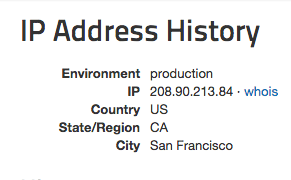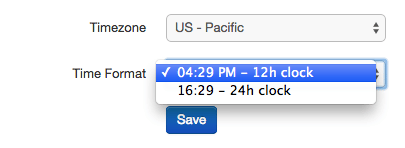Happy Halloween, everyone! Here's a roundup of what's new in Rollbar this month.
Ruby Upgrades
The rollbar gem for Ruby got a lot of attention in October. Early in the month, we released
version 1.1.0, which added support for Ruby 2.1 exception causes, and a new 'failover_handlers'
feature for more reliable asnyc reporting. Mid-month, we released version 1.2 which adds a new, much
nicer and more powerful interface for sending the data you want into Rollbar.
In 1.2, you can do:
begin
Rollbar.info("About to do_something")
do_something
rescue => e
# send a message and extra data along with an exception
Rollbar.error("Something went wrong", e, :foo => "bar")
# customize payload attributes, like the 'person' or 'fingerprint'
Rollbar.scope({:fingerprint => "something"}).error(e)
endMore in the docs. It's available now on Rubygems (latest version is
1.2.7).
New Status Site
We've upgraded status.rollbar.com. We'll be using it to communicate
about outages, so if you'd like to be notified, go there and subscribe to updates. The new status
site also shows the current maximum latencies for the processing pipeline.
Link Rollbar Items with Existing 3rd-party Issues
You can now link a Rollbar item with an existing issue in your issue tracker:

Or if you have a Rollbar item that is already linked, you can now change or remove the link. This
works with Asana, GitHub Issues, JIRA, Pivotal Tracker, Sprintly, and Trello.
Geolocation for IP Addresses
Rollbar now shows geolocation information on the IP address detail page:

You can get there by clicking on an IP address anywhere in the app. More features on this theme to
come; stay tuned.
Basic stats on the Item page
The basic item statistics--when it was first and last seen, how many times it has occurred since
being resolved, and how many total IPs have been affected--are finally available at a glance on the
Item detail page.

Time Format setting
If you'd rather see timestamps use a 24-hour clock, head over to your project's Settings page:

Misc
- Improved processing pipeline speed by ~33%
- Added API methods to set rate limits
- Improved support for code versions in rollbar-android 0.1.0
- Fixed a bug with wrapped functions in rollbar.js 1.1.11
- Added links to detailed usage reports from the Invoice and Usage pages
- Fixed an issue where rate limits would over-limit when duplicate items were received
- Deploy emails now include the deploy comment
- RQL aggregate functions now support arbitrary expressions as parameters
- Improved filename linking for vanilla ruby stack traces
- Added the High Occurrence Rate trigger for HipChat notifications
- Long param values are now displayed better on the occurrence detail page
- The "viewing now" list no longer shows yourself in the list
- Fixed a few edge cases with the Slack integration
- Fixed a bug where the trace_chain section in the Raw JSON part of the occurrence detail page would sometimes be reversed
- Fixed an issue where gravatar images would block the page load


